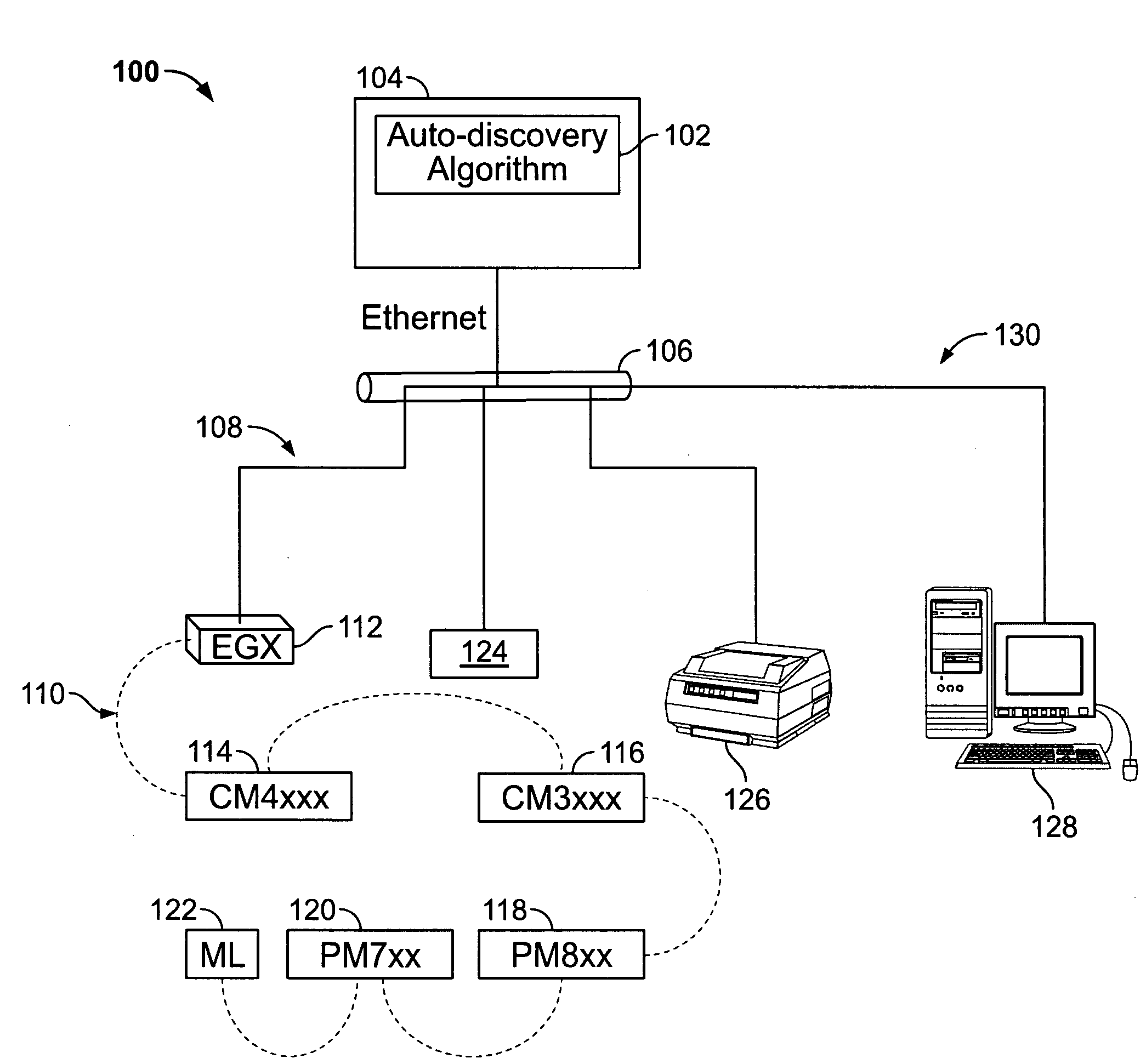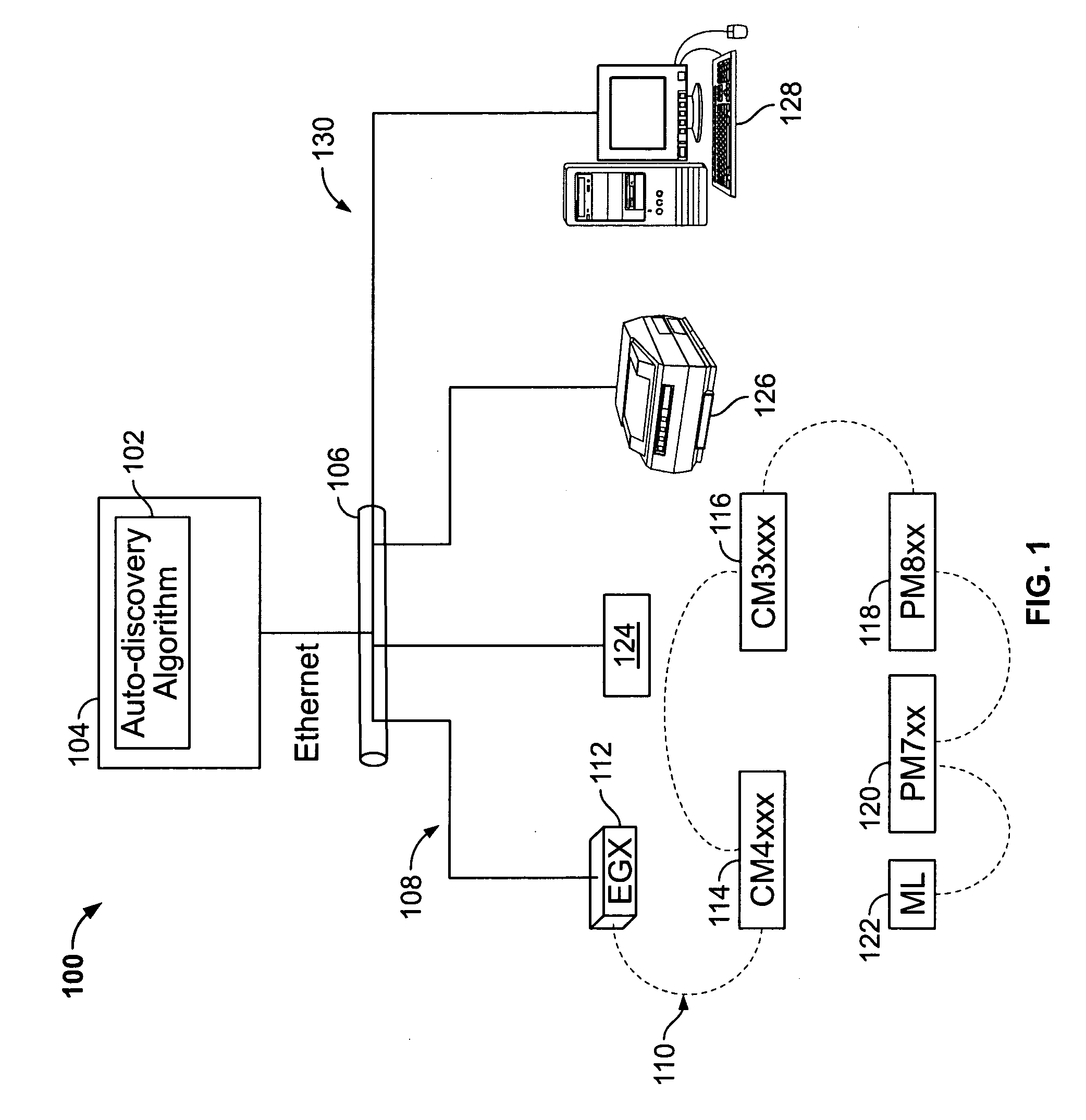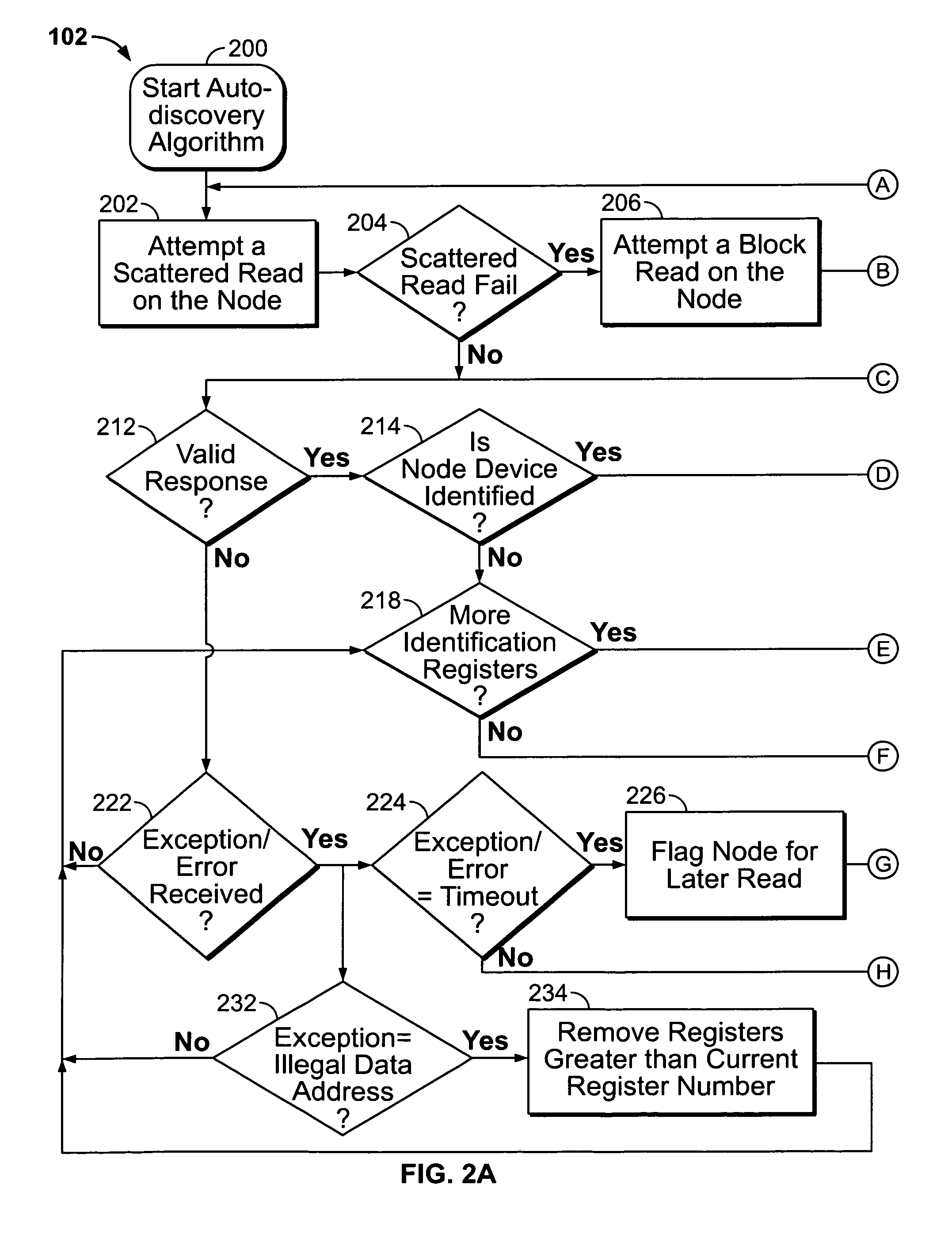Automated discovery of devices in large utility monitoring systems
a utility monitoring and automatic discovery technology, applied in the direction of electric devices, instruments, transportation and packaging, etc., can solve the problems of network congestion becoming a more significant problem, the auto-discovery process is extremely slow, and the response time is limited, so as to reduce the number of packets, improve the efficiency of the auto-discovery process, and fine-tune each devi
- Summary
- Abstract
- Description
- Claims
- Application Information
AI Technical Summary
Benefits of technology
Problems solved by technology
Method used
Image
Examples
Embodiment Construction
[0017]Although the invention will be described in connection with certain preferred embodiments, it will be understood that the invention is not limited to those particular embodiments. On the contrary, the invention is intended to include all alternatives, modifications and equivalent arrangements as may be included within the spirit and scope of the invention as defined by the appended claims.
[0018]Referring now to the drawings, and initially to FIG. 1, an exemplary utility monitoring system 100 is shown. The monitoring system 100 may be any system that monitors measurable characteristics of a utility. The utility being monitored in the monitoring system 100 can be any of the five utilities designated by the acronym WAGES, or water, air, gas, electricity, or steam. In the illustrated example shown in FIG. 1, the utility is electricity, though aspects disclosed herein apply equally to any of the other four utilities. The utility monitoring system 100 is typically arranged in a hier...
PUM
 Login to View More
Login to View More Abstract
Description
Claims
Application Information
 Login to View More
Login to View More - R&D
- Intellectual Property
- Life Sciences
- Materials
- Tech Scout
- Unparalleled Data Quality
- Higher Quality Content
- 60% Fewer Hallucinations
Browse by: Latest US Patents, China's latest patents, Technical Efficacy Thesaurus, Application Domain, Technology Topic, Popular Technical Reports.
© 2025 PatSnap. All rights reserved.Legal|Privacy policy|Modern Slavery Act Transparency Statement|Sitemap|About US| Contact US: help@patsnap.com



